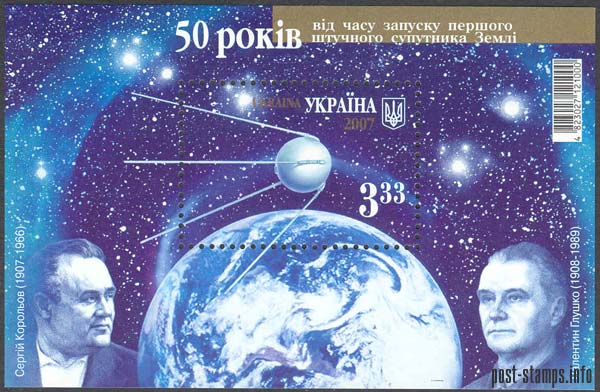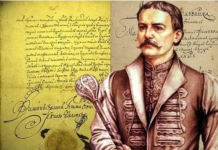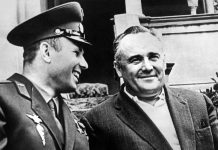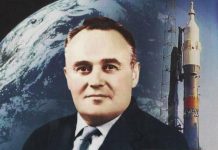Asif Azam Siddiqi is a professor of history with a specialization in the history of science and technology. When the Soviet archives opened in the 1990s, Siddiqi took advantage of it and wrote his first book Challenge to Apollo: The Soviet Union and the Space Race, 1945-1974 which The Wall Street Journal identified as “one of the five best books” on space exploration. The quotes below are taken from it. “Stalin’s death in 1953 signaled the beginning of a new era in the history of the Soviet state… In late 1953, Korolev began to consolidate all the current work on space issues. While in earlier years he may have been reluctant to formally request the Soviet government to sanction some kind of space project, three factors played into his hands by the end of the year. First, the removal of Stalin and Beriya from the political milieu earlier in 1953 allowed him to think of proposing such ideas to the higher leadership without fear of reprisals. Second, his ICBM was finally beginning to take shape, and it was all but given that the Soviet government would enthusiastically approve that program. Without an ICBM, he would not be able to launch any satellite. Finally, the major expansion of work on satellites under Tikhonravov would support his cause with solid scientific research. In December 1953, when he was preparing the decree on approving work on the R-7, Korolev inserted the following lines into the text:
‘We should organize at NII-88 a scientific-research department with the goal of working on problems [together with the Academy of Sciences] of flights to altitudes of 500 or more km, and also work on questions associated with the creation of an artificial satellite of the Earth and the study of interplanetary space with the aid of the [R-7].‘
In the seven years he had been a chief designer, it was Korolev’s very first formal request to the government on a matter related to spaceflight. Knowing that he could not go alone on this matter, in the following months, Korolev marshaled a vast amount of support for his satellite proposal, most significantly from the USSR Academy of Sciences. Korolev spoke with Academician Keldysh on January 23, 1954, to schedule a meeting between the scientists at NII-4 and the Department of Applied Mathematics, to coordinate the entire effort…
The chain of events was set off on July 29, 1955, by U.S. President Dwight D. Eisenhower’s Press Secretary James C. Hagerty, who announced at the White House that the United States would launch “small Earth-circling satellites” as part of its participation in the IGY (International Geophysical Year, a period of intense solar activity from July I, 1957, to December 31, 1957)…
Korolev attended a second meeting on August 30, 1955, at the offices of the” chief scholarly secretary” of the Academy of Sciences, Gennadiy V. Topchiyev. Many other scientists and designers, including Keldysh, Tikhonravov, and Glushko, were present. Korolev had a specific timetable in mind. He told his assemblage, “As for the booster rocket, we hope to begin the first launches in April-July 1957 . .. before the start of the International Geophysical Year.” 101 If Korolev’s earlier Simplest Satellite plans had been timed for the indefinite future, the Eisenhower administration’s announcement in July 1955 completely changed the direction of Korolev’s attack. Not only did it imbue Korolev’s satellite proposal with a new sense of urgency, but it also gave him a specific timetable for which to aim. If the United States was planning to launch during the IGY, then the Soviets would launch one a few months before the beginning of the IGY. The attending scientists at the meeting accepted the new satellite proposal. At Korolev’s recommendation , Keldysh was designated the chairman of the commission; Korolev and Tikhonravov were to serve as his deputies.
Between December 1955 and March 1956, Keldysh consulted a huge number of distinguished scholars to refine the scientific experiments package. They included numerous famous Soviet scientists, many of whose names were public knowledge, unlike those who were actually developing the spacecraft. It was a large-scale operation with a single coordinating mechanism. which, because of its “civilian” nature, had no precedent. Korolev himself was very conscious of the fact that official governmental approval had yet to be granted, which meant that a rocket for the project was still not available, but the magnitude of the immediate tasks obscured that important issue for the time being. There were continuous problems with the program because many of those who were cooperating did not share Korolev’s enthusiasm for the project. For a purely civilian endeavor, the wealth of institutes and design bureaus with which he had to deal was also unprecedented.
…The USSR Council of Ministers issued a decree (no. 149-88ss) on January 30, 1956, calling for the creation of an unoriented artificial satellite. The document approved the launch of a satellite, designated “Object D.” in 1957 in time for the IGY. As per Tikhonravov’s previous computations. the mass of the satellite was limited to 1,000 to 1.400 kilograms, of which 200 to 300 kilograms would be scientific instruments…
It is apparent, however, that Korolev did not want to consign his dreams of space exploration to a single decree. one among as many as 250 discussed per month by the Presidium (later the Politburo). He wanted a direct verbal promise from the Soviet leadership on the satellite project, in particular from Khrushchev himself. His chance came in February 1956 during a high-level state visit to OKB-I. Khrushchev, escorted by the top Presidium members Bulganin, Molotov, and Pervukhin, as well as Minister Ustinov, were on hand to congratulate OKB-I on its recent success with the R-5M and also to review the progress on the R-7 ICBM project.
The visit, on the morning of February 27, was important for Khrushchev because it was his first direct exposure to the top-secret ballistic missile program – an effort that had essentially been run by a number of industrial bureaucrats since Stalin’s death. out of view from Party leaders such as Khrushchev. During the visit, the delegation was escorted by Korolev and NII-88 Director Aleksey S. Spiridinov on a tour that culminated with a presentation of a full-scale model of the R-7 ICBM. The guests were apparently stunned into silence by the size of the vehicle. Like a good performer, Korolev waited a few seconds for the sight to sink in before giving a brief presentation on the vehicle. Khrushchev simply beamed after the report. visibly impressed with the capabilities of the missile.
Glushko then began an elaborate presentation, much different from Korolev’s, filled with extraneous technical details “like he was talking to first-course students at the neighboring forestry institute . .. rather than the higher leadership.” Recognizing the pointlessness of a technical treatise, Korolev cut Glushko short, before summarizing with a succinct conclusion. After a short discussion on the R-7’s capabilities, Korolev innocuously added, “Nikita Sergeyevich [Khrushchev], we want to introduce you to an application of our rockets for research into the upper layers of the atmosphere, and for experiments outside the atmosphere.” The Soviet leader expressed polite interest, although it was clear by this time that most of the guests were becoming tired and bored with the proceedings. Undeterred, Korolev first showed them huge photographs of suborbital missiles that were used for biological and geophysical investigations. Detecting that his guests were in a hurry to leave, he quickly moved ahead and pointed everyone’s attention to a display in a corner of the room of a model of an artificial satellite that had been created as part of the satellite program of the Academy of Sciences. Invoking the name of a legendary Soviet scientist, Korolev hurriedly explained that it was possible to realize the dreams of Tsiolkovskiy with the use of the R-7 missile. Korolev pointed out that the United States had stepped up its satellite program, but that compared to the “skinny ” U.S. launch vehicle, the Soviet R-7 could significantly outdo that project in terms of the mass of the satellite. In closing. he added that the costs for such a project would be meager because the basic expense for the launcher was already allocated in the R-7 booster. Khrushchev began to exhibit some interest. and he asked Korolev if such a plan might not harm the R-7 weapons research program, given that was the primary focus of work at Korolev’s design bureau. Clearly oversimplifying the difficulties involved, Korolev shot back that unlike the United States. which was spending millions of dollars to develop a special rocket to launch a satellite. all the Soviets would have to do was replace the warhead with a satellite on the R-7. Khrushchev hesitated for a second, perhaps suspicious of Korolev’s intentions. but answered back. “If the main task doesn’t suffer, do it.”
After more than two years of explicit lobbying, the artificial satellite project was a reality. And it owed its approval to Korolev more than anyone.
it was Korolev’s repeated requests, letters, meetings, reports, and entreaties that finally forced the decision, Korolev also had a climate conducive to his needs. His standing among the military and industrial community had evolved over the years from maverick engineer to genius manager. His successes with the series of ballistic missiles pleased both the military and industry. Also, it did not hurt that both of these sectors. by 1956. were populated by individuals who were sympathetic to the Korolev’s unquenchable thirst for space exploration…
Hindsight suggests that the Soviet space program was born on January 30, 1956, and without Korolev, it would have never been conceived.
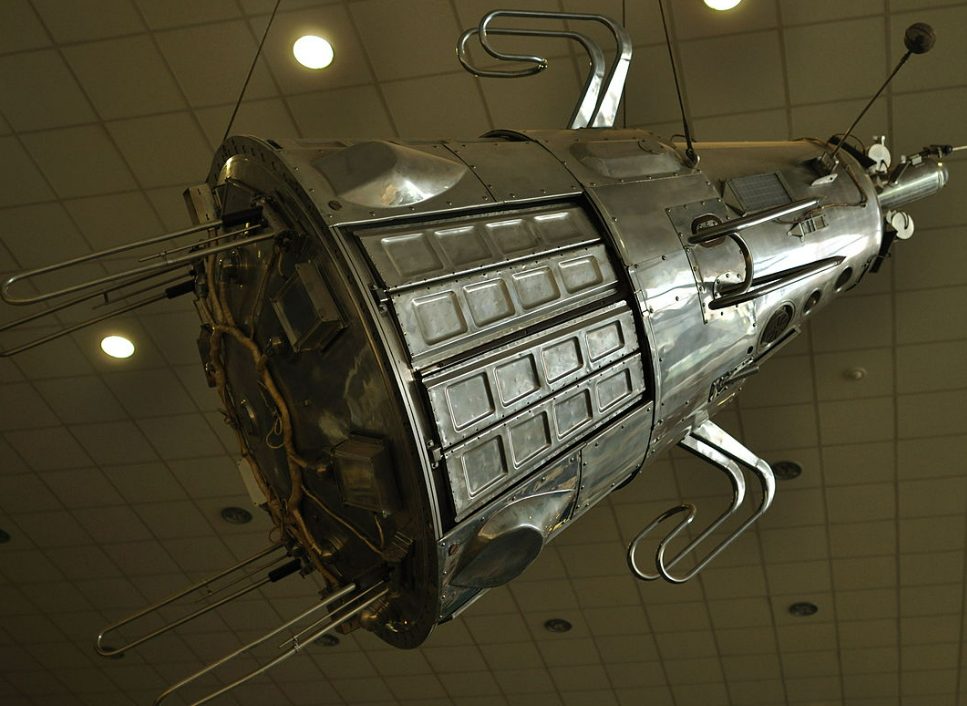
Object D (or D-I) was so named because it would be the fifth type of payload to be carried on an R-7. Objects A, S, Y, and G were designations for different nuclear warhead containers.”‘ The satellite was a complex scientific laboratory, far more sophisticated than anything planned for launch in the world in 1956…
A second concern were the results of static testing of the R-7 engines on the ground. Instead of the projected specific impulse of 309 to 310 seconds, the R-7 engines could not produce more than 304 seconds – too low for the heavy Object D satellite. He realized that perhaps he was making this effort too complicated. Why not attempt to launch something simpler on the first orbital attempt instead of a sophisticated one-and-a-half-ton scientific observatory?
… Not one to sit still. Korolev immediately took action on the matter… Keldysh was dead set against the idea, which was not surprising because he had invested so much time and energy into Object D. There were other engineers within OKB-I who were also not too enthused by the new plan. All eventually ceded to the strong-willed Korolev. As insurance, Korolev decided not to depend on dozens of other subcontractors. He made sure that the new satellite would be designed and manufactured completely within his own design bureau with the help of only two outside organizations: the Scientific-Research Institute of Current Sources under Nikolay S. Lidorenko for the design of the on-board batteries and N 11 -885 under Chief Designer Ryazanskiy for the radio transmitters.
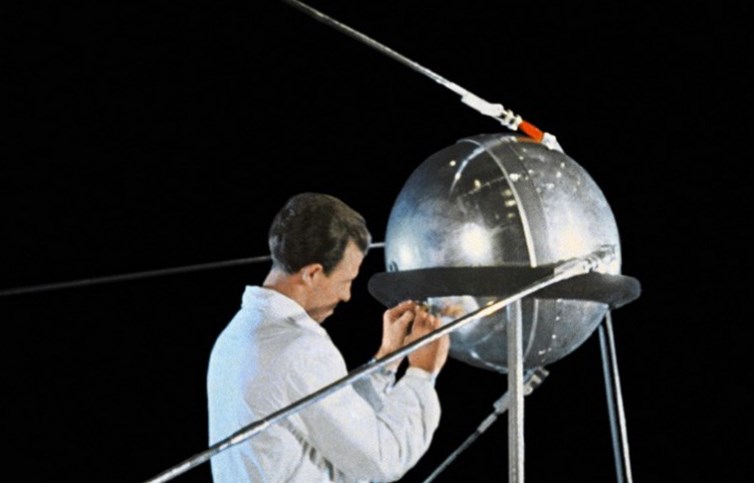
By January 25. 1957. Korolev had approved the initial design details of the satellite officially designated the Simple Satellite No. I (PS-I).
On February 15, the USSR Council of Ministers formally signed a decree (no. 171-83ss) titled “On Measures to Carry out in the International Geophysical Year,” agreeing to the new proposal. The two new satellites. PS-I and PS-2. would weigh approximately 100 kilograms and be launched in April-May 1957, after one or two fully successful R-7 ICBM launches.
Work on the Simple Satellite PS-I continued at an uneven pace since the development of the object began in November 1956. Between March and August 1957. engineers carried out computations to select and refine the trajectory of the launch vehicle and the satellite during launch. These enormously complicated computations for the R-7 program were initially done by hand using electrical arithrometers and six-digit trigonometric tables. When more complex calculations were required. the engineers at OKB-I were offered the use of a “real” computer recently installed at the premises of the Department of Applied Mathematics at Keldysh ‘s request. The gigantic machine filled up a huge room and may have been the fastest computer in the Soviet Union in the late 1950s; it could perform 10.000 operations per second. a remarkable capability for Soviet computing machines of the time.
Engineers, scientists, and military officers expended a major effort in creating a ground infrastructure to track and make contact not only with the PS-I, but also with the much more complex Object D, still awaiting launch in 1958.
There were many debates on the shape of the first satellite, with most senior OKB-I designers preferring a conical form because it fit well with the nose cone of the rocket. At a meeting early in the year, Korolev had a change-of-heart and suggested a metal sphere at least one meter in diameter. There were six major guidelines followed in the construction of the PS-I:
- The satellite would have to be of maximum simplicity and reliability while keeping in mind that methods used for the spacecraft would be used in future projects.
- The body of the satellite would be spherical to determine atmospheric density in its path.
- The satellite would be equipped with radio equipment working on at least two wavelengths of sufficient power to be tracked by amateurs and to obtain data on the propagation of radio waves through the atmosphere.
- The antennas would be designed so as not to affect the intensity of the radio signals because of spinning.
- The power sources would comprise on-board chemical batteries, ensuring work for two to three weeks.
- The attachment of the satellite to the core stage would be designed in such a way as to minimize the possibility of a separation failure.
The five primary scientific objectives of the mission were to:
- Test the method of placing an artificial satellite into Earth orbit
- Provide information on the density of the atmosphere by calculating its lifetime in orbit
- Test radio and optical methods of orbital tracking
- Determine the effects of radio wave propagation through the atmosphere Check principles of pressurization used on the satellite
The satellite as it eventually emerged was a pressurized sphere, fifty-eight centimeters in diameter, made of an aluminum alloy. The sphere was constructed by combining two hemispherical casings together. The pressurized internal volume of the sphere was filled with nitrogen at 1.3 atmospheres, which maintained an electro-chemical source of power (three silver-zinc batteries), two 0-200 radio transmitters, a DTK-34 thermo-regulation system, a ventilation system, a communications system, temperature and pressure transmitters, and associated wiring. The two radio transmitters operated at frequencies of 20.005 and 40.002 megacycles at wavelengths of one and a half and seven and a half meters, respectively. The signals on both the frequencies were spurts lasting 0.2 to 0.6 seconds, and they carried information on the pressure and temperature inside the satellite. They provided the famous “beep-beep” sound to the transmissions. The antenna system comprised four rods, two with a length of 2.4 meters each and the remaining two with a length of 2.9 meters each, all of which would spring open into their unfurled position once the satellite was in orbit.
At a State Commission meeting soon after the August [R-7 missile] launch, Korolev formally asked for permission to launch a satellite if a second R-7 successfully flew in early September. For many of the members, while they were aware of the Object D project, the existence of the PS-I effort was a complete surprise. Convincing the commission proved to be much harder than expected, and the meeting ended in fierce arguments and recriminations. Not easily turned away, Korolev tried again at a second session soon after, this time using a political ploy: “I propose let us put the question of national priority in launching the world’s first artificial Earth satellite to the Presidium of the Central Committee of the Communist Party. Let them settle it.” It worked. None of the members wanted to take the blame for a potential miscalculation, and Korolev got what he wanted. A final document for launch, “The Program for Carrying out a Test Launch of a Simple Unoriented ISZ (Object PS) Using the Product 8K71 PS,” was later signed.
The subsequent launch of the R-7 on September 7 was as successful as the one in August, and the missile, 8K71 number M 1-9, flew across the Soviet Union before depositing its dummy warhead in Kamchatka…
Still apprehensive over a last-minute launch from the United States, Korolev abruptly proposed to the State Commission that the launch be brought forward two days. His concerns were apparently prompted by plans for a conference in Washington, D.C., to be held in early October as part of IGY proceedings. According to Korolev’s information, American delegates would present a paper titled “Satellite Over the Planet” on the 6th, the day of the PS-I’s scheduled launch. He believed that the presentation was timed to coincide with a hitherto unannounced launch attempt of a U.S. satellite. Local KGB representatives assured Korolev that this was not so, but Korolev was convinced that there would be a launch of an Army Jupiter C on that day. The State Commission buckled under Korolev’s wishes and moved the PS-I launch forward by two days to the 4th; Korolev signed the final order for launch at four in the afternoon on the 2nd and sent it to Moscow for approval.
The seconds counted down to zero, and Nosov shouted the command for liftoff. Chekunov immediately pressed the launch button. At exactly 2228 hours, 34 seconds, Moscow Time, the engines ignited, and the 272.830-kilogram booster lifted off the pad in a blaze of light and smoke. The five engines of the R-7 generated about 398 tons of thrust at launch. Although the rocket lifted off gracefully, there were problems. Delays in the firing of several engines could have easily resulted in a launch abort. Second, at T +16 seconds, the Tank Emptying System malfunctioned, resulting in a higher than normal kerosene consumption. A turbine failure because of this resulted in main engine cutoff one second prior to the planned moment. Separation from the core stage, however, occurred successfully at T +324.5 seconds, and the 83.6-kilogram PS-I successfully fell into a free-fall elliptical trajectory. The first human-made object had entered orbit around Earth. A new era had begun.
There was cheering once the Kamchatka station picked up signals from the satellite, but Korolev cut everybody off: “Hold off on the celebrations. The station people could be mistaken. Let’s judge the signals for ourselves when the satellite comes back after its first orbit around the Earth.” Eventually the distinct “beep-beep-beep” of the craft came in clearly over the radio waves, and the crowd began to celebrate. Chief Designer Ryazanskiy, who was at the van, immediately telephoned Korolev in the bunker. The ballistics experts at the Coordination-Computation Center back in Moscow had determined that the satellite was in an orbit with a perigee of 228 kilometers and an apogee of 947 kilometers, the latter about eighty kilometers lower than planned because of the early engine cutoff. The inclination of the orbit to Earth’s equator was 65.6 degrees, while the orbital period was 96.17 minutes. Experts at the center had also determined that the satellite was slowly losing altitude, but State Commission Chairman Ryabikov waited until the second orbit was over prior to telephoning the Soviet leader. According to conventional wisdom, Khrushchev’s reaction to the launch was unusually subdued for an event of such magnitude, indicating that he, like many others, did not immediately grasp the true propaganda effect of such a historic moment. He told the press:
‘When the satellite was launched, they phoned me that the rocket had taken the right course and that the satellite was already revolving around the earth. I congratulated the entire group of engineers and technicians on this outstanding achievement and calmly went to bed.’
Khrushchev’s son, however, recalls that his father’s reaction was a little more enthused. The older Khrushchev at the time was on visit to Kyiv to discuss economic issues with the Ukrainian Party leadership. Around 11:00 p.m. these negotiations were interrupted by a telephone call. Khrushchev quietly took the call, then returned back to his discussions without saying anything. Eventually, as his son recalled, the news was too difficult to keep under wraps:
He finally couldn’t resist saying (to the Ukrainian officials]: “I can tell you some very pleasant and important news. Korolev just called (at this point he acquired a secretive look). He’s one of our missile designers. Remember not to mention his name – it’s classified. So, Korolev has just reported that today, a little while ago, an artificial satellite of the Earth was launched. The Soviet leader was animated the rest of the evening, speaking in glowing terms about the new era of missiles, which could” demonstrate the advantages of socialism in actual practice” to the Americans.
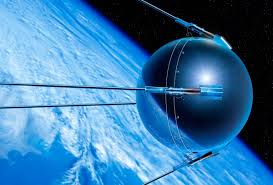
Beginning with the launch of Sputnik, of the major contributors to the success of Sputnik, Korolev, Glushko, and Keldysh were referred in the open press as the Chief Designer of Rocket-Space Systems, the Chief Designer of Rocket Engines, and the Chief Theoretician of Cosmonautics, respectively.
The titles not only hid their identities but also added an element of enigma to the men behind the world’s first space program. New editions of histories of Soviet rocketry published prior to 1957 ceased to carry Korolev’s name. and Soviet encyclopedias subsequently listed him as heading a laboratory in an unspecified “machine building” institute in the Soviet Union. Glushko, meanwhile, was said to be laboratory chief at the Moscow Institute of Mineral Fuels) Korolev, certainly in recognition of the key role he played, was allowed to write in no less an important newspaper as Pravda, but under the pseudonym “Professor K. Sergeyev.” His first article, titled “Research into Cosmic Space,” was published on December 12, 1957. Khrushchev claimed at the time that as the years went by, “the photographs and names of these illustrious people will be made public,” but that for the moment, “in order to ensure the country’s security and the lives of these scientists, engineers, technicians, and other specialists, we cannot yet make known their names or publish their photographs.
One can imagine how Korolev, Glushko, Pilyugin, Barmin, and Tikhonravov must have felt watching Sedov, Blagonravov, and others traveling across the world, giving speeches to awestruck audiences, who believed they were looking at the founders of the Soviet space program. Eventually, the secrecy was loosened, and the names were released. Of the six original chief designers whose names were classified as top secret in 1957, all would eventually live to see their names in the press – except one, the founder and instigator of humankind’s first step into the cosmos, Sergey Pavlovich Korolev.
Valentin Glushko (Wikipedia), Ukrainian born in Odessa, Ukraine >
Sergei Korolev, Ukrainian born in Zhytomir, Ukraine >
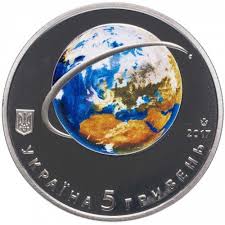
2017 Ukrainian Memorial coin for the 60th Anniversary of Sputnik Launch



